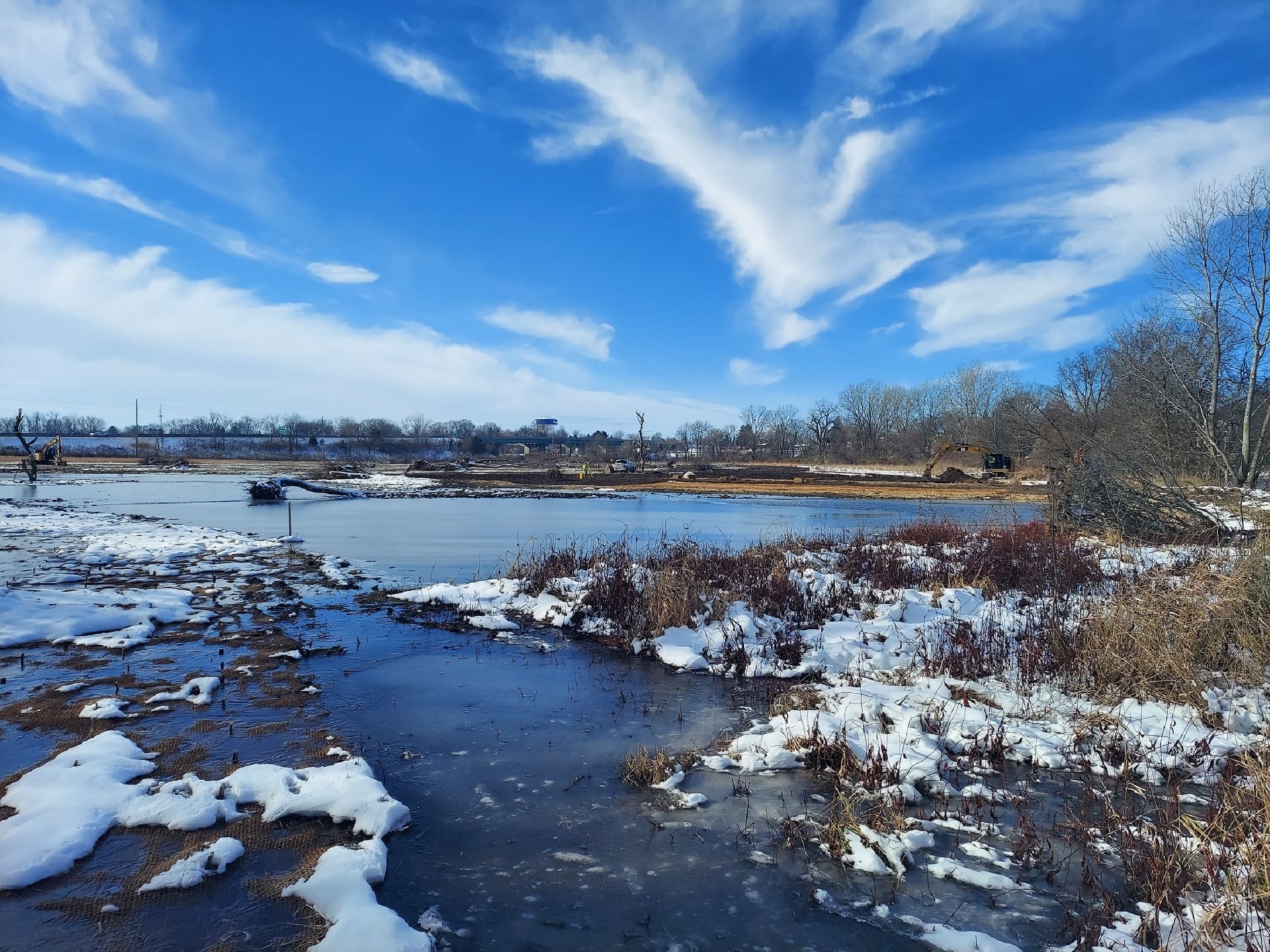Winter is coming. I’m ready for it. I know I’m considered a little weird for this opinion, but I’m a big fan of snow and cold. Lucky for me, I’ve got a sturdy warm house to retreat to and plenty of hot food and warm drinks to perk me up after a day outside in the cold. But what about the wildlife that live in our nature preserves? How do they find shelter and food in the long cold winter?
Wildlife use a lot of strategies to survive winter, but they boil down to three basic options: go south, sleep it off, or just tough it out.
Go South
We all think of birds migrating south for the winter. But did you know some dragonflies migrate too? In the summer, our Little Auglaize Wildlife Reserve is teeming with dragonflies and damselflies…27 different species, in fact! Two of those species are well-known migrators: Common Green Darners and Black Saddlebags. The adults arrive here in early spring and breed in the wetlands. Their eggs hatch, and the larvae feed and grow in the shallow warm waters. They crawl from the water in late summer, split their skins and emerge as winged adults. The young adults fly south, traveling hundreds or even thousands of miles to overwinter in Florida or Mexico, covering up to 90 miles a day!
Sleep it Off
Four-toed Salamanders don’t have the option of flying away from the frozen north. Instead, they rely on each other to get through the winter. The Four-toed Salamander breeds in high-quality wooded wetlands on beds of moss. But in the winter they need relatively drier forest floors. The salamanders gather in large groups with other salamander species and even frogs in overwintering sites. They cluster together and hibernate under fallen leaves, inside rotting logs or in cavities in the soil. The Four-toed Salamander is an Ohio state species of concern. Only special places like our Forrest Woods Nature Preserve have the combination of mossy shaded wetlands and mature forests that this salamander needs to live through the seasons.
Tough it Out
Finally, we have the animals that just keep living their lives through the winter, though maybe at a different pace. Tiny mammals like Meadow Voles and little birds like Chickadees eat almost constantly through the winter in order to produce enough heat to survive the cold. Pileated Woodpeckers, a large crow-size bird, keep warm in special winter roosting cavities that they excavate in standing dead trees. They come out to eat carpenter ants and poison ivy berries during the short winter days, but stay warm in their roosts during the long winter nights. Pat & Clint Mauk’s Prairie, with its 25-acre prairie nestled against a mature wood with several standing dead trees, is a great place to observe all three of these animals in the winter.
I’m looking forward to visiting these special places this winter. It’s so enlightening to see the changes our preserves go through each season. I hope you’ll bundle up and brave the outdoors this winter, too. Trust me and the chickadees… it’s worth it!
Stay Swampy My Friends,
Melanie Coulter


